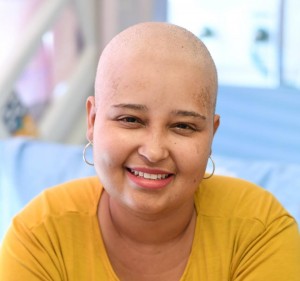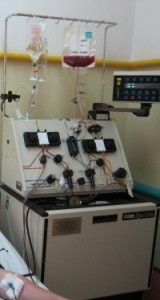
She played matching games when she was a child. True, she wanted very much to win but losing wasn’t the end of the world. Now she is thirty. And losing this ‘matching game’ would be the end of her world… the end of her life.
She had been experiencing strong back pains for several months. When the pain intensified, she visited her doctor. Tests revealed that she had lymphocytic leukemia. Radiation and chemotherapy were not enough. Due to the aggressive character of the illness, she would have to have a stem cell transplant asap. Within a few, short weeks! “We are in a race against time,” explained Dr. Itai Levy, head of the Hematology Department in Soroka Hospital.
Her name is Vorkanash.

She is a member of the Ethiopian community in Israel, a community that is underrepresented in Ezer Mizion’s Bone Marrow Registry in proportion to its representation in Israel’s general population. “It’s somebody’s life. We have to do everything possible to save her,” says Dr. Bracha Zisser, founder and director of the Registry. “No human being should have to undergo the anguish of waiting for that elusive DNA match.” Ezer Mizion has undertaken a drive to increase the level of Ethiopian registration both for Vorkanash and others of this segment of Israel’s population. Measures are being taken to boost the chances of a match being found for Vorkanash…before it’s too late. From almost 900,000 potential Ezer Mizion Registry donors, only 11,530 are of Ethiopian descent resulting in no match, so far, for Vorkanash. But she is hopeful that soon one of the new registrants will be found to be her genetic counterpart.
Unlike blood typing, DNA matching is quite complex with many more factors involved. Ethnicity plays a major role. Ezer Mizion, the largest Jewish registry in the world, has saved the lives of over 2700 in Israel, America and every country on the globe that has a significant Jewish community. In 2017 alone, 307 life-saving transplants were performed.

When a donor is found to be a match for a cancer patient, he is treated to increase his stem cells. When the ‘big day’ arrives, he will be treated like royalty as he lies in a hospital bed attached to a machine that will separate his stem cells. Blood is drawn from an IV in one arm. It passes through the machine where the stem cells are extracted and the blood is then returned to him via the other arm. This process continues until enough stem cells have accumulated. The little ‘bag of life’ is then brought to the patient accompanied by the donor’s prayers. After a year, the donor is legally permitted to meet with the patient and his family, a highly emotional gathering. One cannot begin to imagine the feelings that rise up as a young father embraces the man whose selflessness had saved his child’s life.
